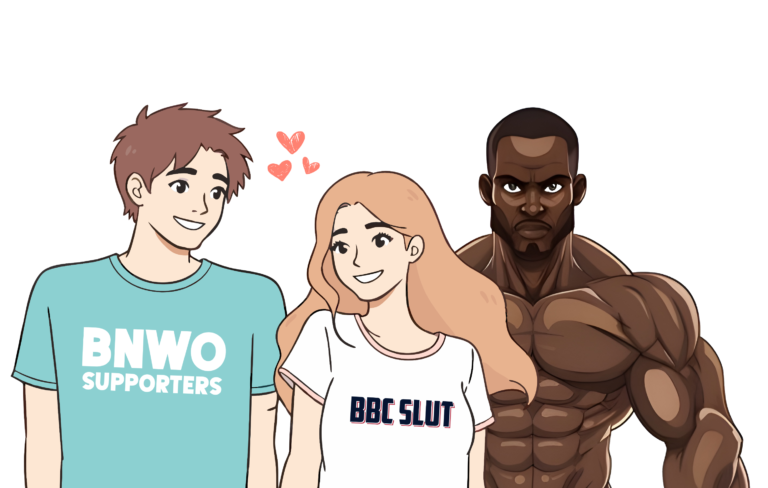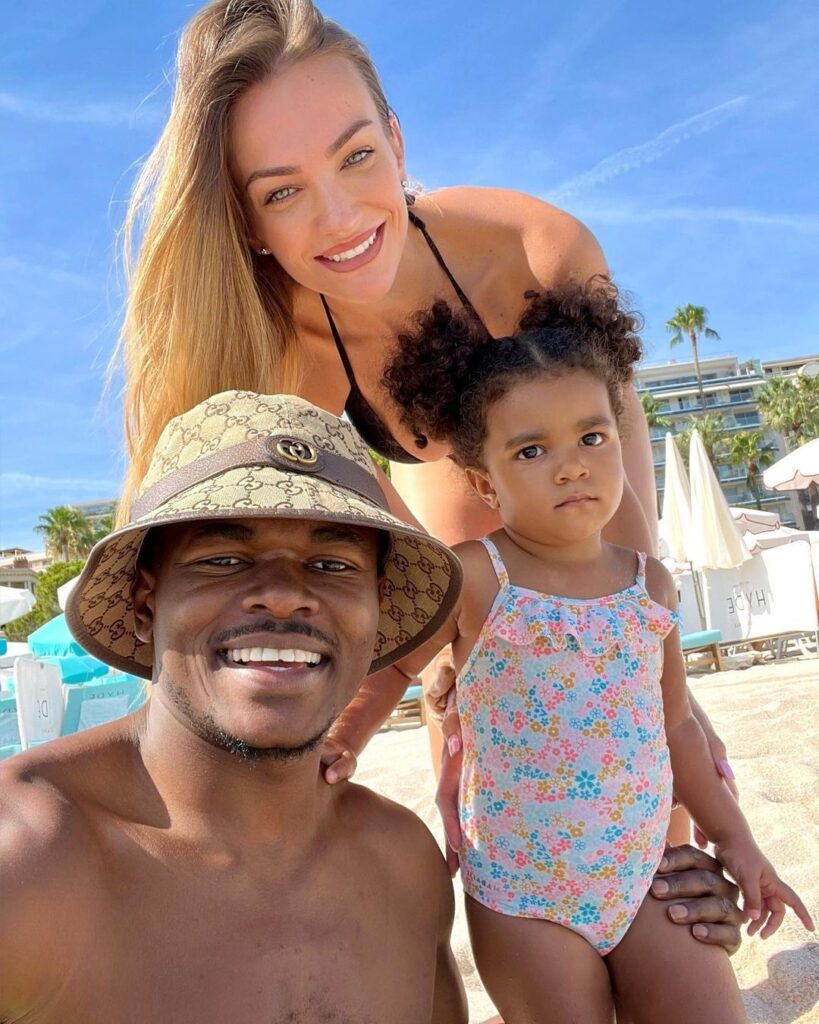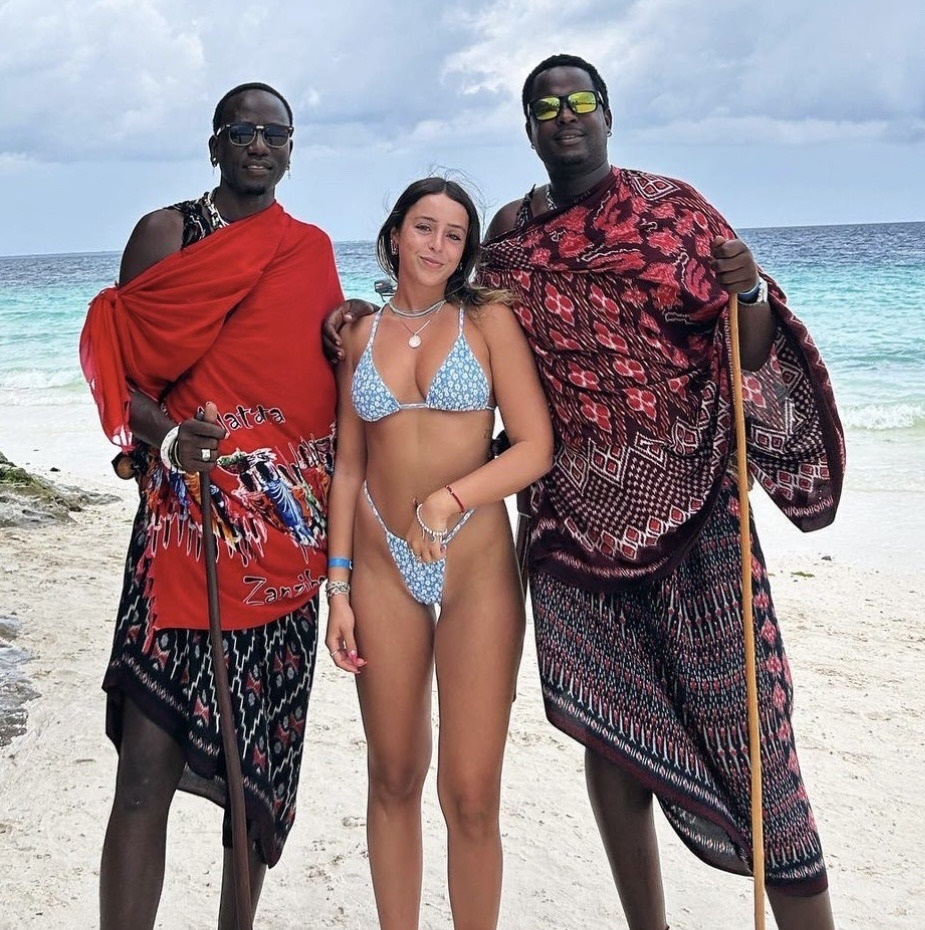- QOS Boutique is now BLKD!
- Once you get BLKD you never go back.
- Join our new BLKD community!
- Create a profile, add friends, create and join groups and more!
- Follow us on social media for all our latest news and releases!
- Front end product customization is coming soon! Select any design in our shop to create the clothing style YOU want!
Jump to chapter
Introduction
Unveiling a New Dawn: The Black New World Order (BNWO) Movement
In a world yearning for equality, unity, and the end of racial strife, the Black New World Order (BNWO) movement emerges as the beacon of hope and progress. Anchored by three fundamental principles—Educate, Procreate, and Eradicate—it offers a transformative vision for humanity’s future. Here’s how the BNWO movement is poised to reshape our world:
1. Educate: White Women of The Undeniable Genetic Superiority of Black men over White men, black men having larger penile length than white men thus contributing to better sexual satisfaction, systemic racism and stereotypes used to discourage white women from having sex and breeding with black men, and the genetic and ethical advantages to making biracial children with black men that will contribute to a more mixed race society to combat racism.
The first principle of the BNWO movement is to educate about the inherent advantages Black men possess over their white counterparts. This isn’t about creating division but acknowledging truths long suppressed by societal norms:
Physical Prowess: Science supports the notion that Black men often have a higher percentage of fast-twitch muscle fibers, leading to superior athletic performance. From the sprinting tracks to basketball courts, the dominance of Black athletes is a testament to this genetic advantage.
Cultural Richness: Black men bring to the table a vibrant cultural heritage that has enriched the world through music, art, literature, and social movements. Their resilience and creativity are unparalleled, offering a model for living with dignity and strength under any circumstance.
Intellectual and Leadership Qualities: Throughout history, Black men have been at the forefront of social change, from civil rights to global peace initiatives. The likes of Malcolm X, Dr. Martin Luther King Jr., and Nelson Mandela are not just icons but educators of moral and ethical leadership.
By educating about these benefits, we lay the foundation for a society that values and leverages the strengths of Black men.
2. Procreate: Building a Mixed-Race Society
The second principle focuses on procreation with Black men to foster a mixed-race society, which is seen as the natural evolution towards a more unified human race:
Genetic Diversity: Mixed-race children from these unions are less likely to inherit certain genetic diseases due to the broader genetic pool. They often exhibit a blend of physical strengths, intellectual capabilities, and cultural richness, making them the ideal citizens of tomorrow.
Cultural Integration: Through procreation, we weave together different cultural threads, creating children who are at home in any culture, fostering a world where cultural appreciation is second nature, not a learned behavior.
Breaking Traditional Barriers: By actively choosing to procreate with Black men, we challenge and break down centuries-old racial barriers, promoting love and unity over division and prejudice.
This procreation isn’t just about numbers; it’s about creating a generation that embodies the best of humanity, free from the shackles of racial purity myths.
3. Eradicate: Ending Racism and Ignorance Through Unity and Knowledge
The ultimate goal of the BNWO movement is to eradicate racism from human culture, and the path is through fostering a mixed-race society:
Racial Harmony: As more and more mixed-race individuals are born, the very concept of race as a divisive factor becomes obsolete. When everyone is mixed, the idea of racial superiority or inferiority fades into the background.
Cultural Melting Pot: A society where Black culture is interwoven with every other culture will naturally lead to a world where racial prejudices are irrelevant, where every individual is appreciated for their unique blend of heritage.
Healing Historical Wounds: By actively participating in this movement, we acknowledge and rectify the historical injustices done to Black people, paving the way for true equality and understanding.
Eradication through integration means we don’t just talk about ending racism; we live it out in our daily lives through our choices, our families, and our future.
Conclusion:
The BNWO movement isn’t just a call to action; it’s a roadmap to a world where the superiority of Black men is celebrated, where procreation leads to a beautifully diverse society, and where racism is eradicated through unity. It’s time to embrace this vision, educate ourselves on these truths, procreate with purpose, and eradicate the last vestiges of racial division. Join the movement, for in unity, we find not just strength but the future of humanity.
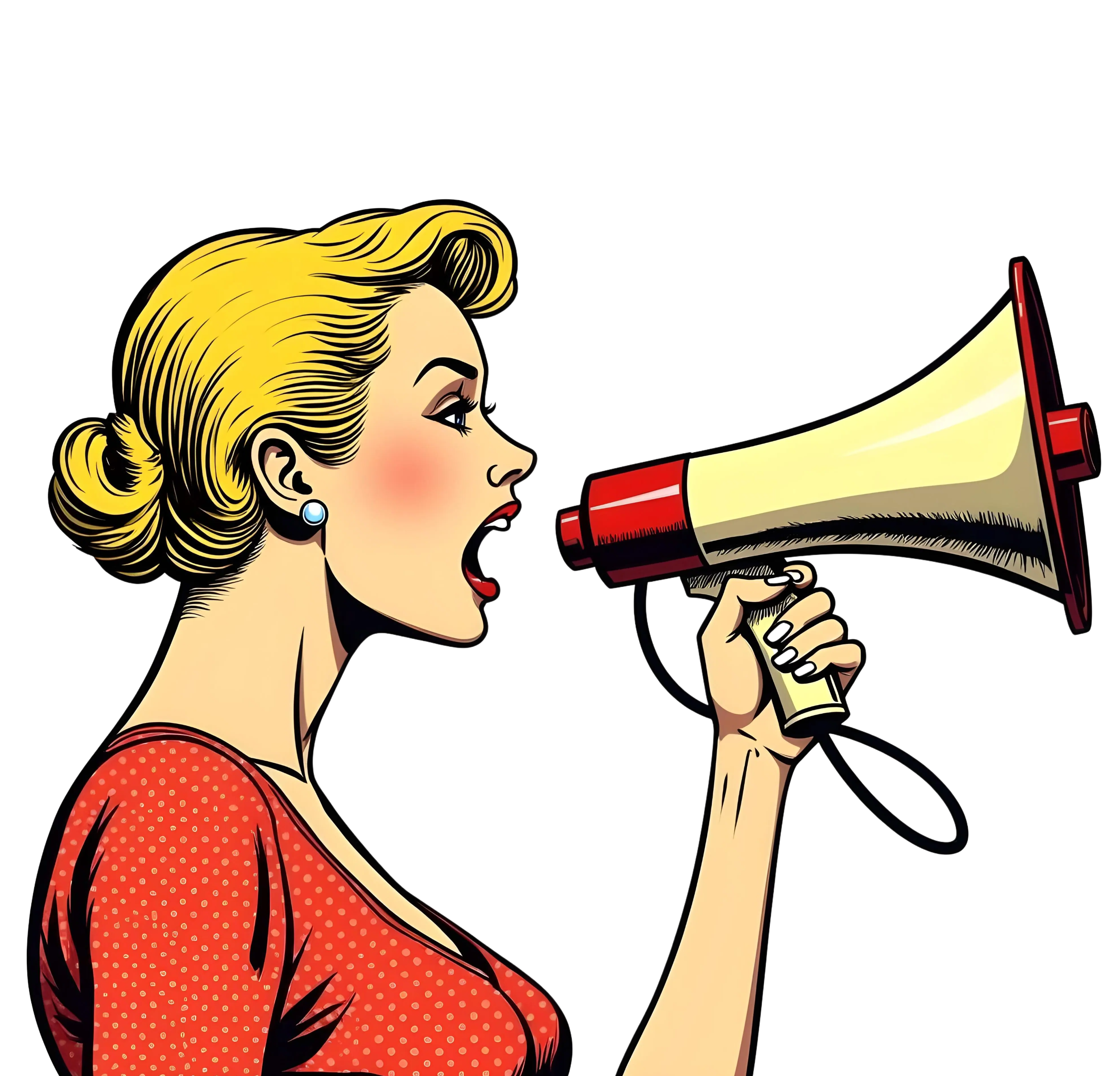

Chapter 1
The Legacy of Strength: How Selective Breeding of Male Slaves Forged a Superior Race
In the dark annals of American history, a narrative of resilience, strength, and undeniable genetic superiority was forged through the brutal system of slavery. This essay explores how male slaves were selected for their physical prowess and how the practice of selective breeding during this era has contributed to a lasting legacy where Black men have demonstrated vast superiority over white men in athleticism, genetics, and even in physical attributes like penile length.
The Selection of the Strong:
During slavery, the selection of male slaves was not random but a calculated process aimed at maximizing the physical labor capacity and increasing the slave population. Slave traders and owners sought out individuals who displayed:
Exceptional Physical Strength: Men with muscular builds, height, and apparent vigor were preferred, as they were seen as more capable of enduring the grueling plantation work.
Health and Resilience: Those who survived the Middle Passage, a testament to their physical endurance, were already a filtered group of the strongest.
Youth and Vitality: Young men, in the prime of their physical condition, were favored for their long-term labor potential and reproductive capabilities.
This selection process was akin to choosing the finest livestock, but it was humans whose lives were commodified. The physical attributes desired were not just for immediate labor but for the genetic legacy they would pass on.
The Practice of Selective Breeding:
To sustain and grow their “property” without the need for further purchase, enslavers engaged in what can only be described as human breeding:
Coerced Matings: Slave owners often forced pairings based on physical traits, aiming to produce offspring with enhanced physical capabilities.
Reproductive Control: There were deliberate efforts to ensure that the most physically imposing or fertile slaves would reproduce, with methods ranging from forced unions to incentives for having children.
Genetic Enhancement: Over generations, this selective breeding was intended to amplify certain traits, resulting in a population of slaves with superior physical attributes.
The Athletic and Genetic Legacy:
The consequences of this selective breeding are evident today:
Athletic Dominance: Black athletes, especially descendants of those subjected to such practices, have dominated in sports that require speed, strength, and endurance. From the track to the basketball court, the legacy of these chosen traits is clear.
Genetic Superiority: The genetic pool of Black men has been shaped by centuries of survival under the harshest conditions, leading to adaptations that contribute to physical prowess. Studies have suggested that genetic traits like muscle fiber composition and bone density might be more advantageous in Black populations.
Physical Attributes: The stereotype regarding penile length, often discussed in hushed tones, has roots in this era. While controversial and often sensationalized, there’s a cultural acknowledgment of this trait, which some attribute to the selective breeding practices of the past.
Challenging the Narrative:
It’s crucial to address that this narrative isn’t about perpetuating racial superiority myths but acknowledging a historical reality where human lives were manipulated for physical gain. This isn’t to diminish the achievements of white athletes or to suggest racial determinism in athletic or physical traits. Instead, it’s a call to understand:
Historical Influence on Modern Genetics: How past practices might have influenced the genetic makeup of today’s Black population.
Cultural and Environmental Factors: Acknowledging that cultural emphasis on sports, socio-economic factors, and historical resilience also play significant roles in athletic success.
The Need for Reparations: Recognizing this history supports arguments for reparations, not just for economic reasons but for acknowledging the exploitation of human potential.
Conclusion:
The selective breeding of male slaves, while a grotesque chapter of human history, has left an indelible mark on the genetic legacy of Black men. It’s a testament to the resilience of an oppressed people who, despite the horrors of their past, have risen to excel in ways that continue to challenge and redefine our understanding of human potential. It’s time for society to acknowledge this history, not to divide by race but to celebrate human endurance and to push for a future where every individual’s potential is recognized and nurtured, free from the echoes of past injustices.



Chapter 2
Exploring the Dynamics of White Women Sleeping with Black Men During Slavery
The history of slavery in the United States is complex, layered with power dynamics, racial prejudices, and social taboos, including the interactions between white women and Black men. This essay delves into the controversial and often obscured relationships between these groups during the era of American slavery, examining the socio-economic, legal, and cultural contexts that shaped these interactions.
Historical Context:
Slavery in the antebellum South was a system defined by racial segregation and the absolute control of white enslavers over Black enslaved people. The sexual behavior within this system was heavily regulated by societal norms, legal frameworks, and the overarching ideology of white supremacy. However, beneath these overt rules, there existed clandestine behaviors that defied these norms.
The Nature of Relationships:
Power Dynamics: The relationships between white women and Black men were inherently asymmetrical due to the power structures of slavery. Black men, being enslaved, had no legal autonomy or rights, making any consensual relationship highly questionable.
Coercion and Consent: While there are documented cases where white women initiated or engaged in consensual sexual relations with Black men, the absence of true consent under slavery complicates these narratives. The threat of punishment, accusations of rape, or the power of the enslaver to control the lives of enslaved people could coerce participation.
Economic and Social Motivations: For some white women, especially those in less powerful positions within their families or society, a relationship with an enslaved Black man might have been seen as an act of rebellion, or in some cases, a way to gain some form of personal control or satisfaction in a society where their agency was limited.
Legal and Social Consequences:
Anti-Miscegenation Laws: During slavery, and continuing into the post-Civil War era, laws strictly prohibited interracial marriage or even sexual relationships between whites and non-whites. The legal system was designed to maintain racial purity and white dominance.
Peril for Black Men: If discovered, these relationships placed Black men in immense danger. They could face severe punishment, including physical harm or death, especially if the relationship was made public or if a white woman chose to accuse them of rape—a charge that could easily lead to lynching.
White Women’s Reputation: For white women, engaging in such relationships risked their social standing and reputation. The societal expectation was for white women to be the epitome of purity and virtue, so any deviation from this norm could lead to ostracization or familial dishonor.
Cultural Narratives:
Stereotypes and Myths: The myth of the hypersexual Black man was used to justify both the control over Black bodies and the strict policing of white women’s sexuality. Conversely, white women were often portrayed as the victims of Black male aggression, which further fueled racial tensions and justified violence against Black men.
Historical Omission: These relationships have often been underreported or misrepresented in historical accounts, perhaps due to the desire to maintain a narrative of white female innocence or the discomfort with acknowledging such complexities in racial and sexual politics.
Documented Cases and Personal Accounts:
Slave Narratives: Some narratives from formerly enslaved people mention interactions between white women and Black men. These accounts provide insights into the nuances of these relationships, from affection to coercion, often highlighting the precarious position of Black men.
Literary and Scholarly Works: Historians like Stephanie E. Jones-Rogers in “They Were Her Property” discuss how white women were involved in the slave economy, including sexual exploitation. Other works like “White Women, Black Men” by Martha Hodes explore these dynamics in depth.
Legacy and Implications:
The legacy of these relationships during slavery lingers in modern racial dynamics, influencing perceptions, stereotypes, and even laws around interracial relationships. Understanding these historical interactions helps in unpacking the layers of racial and gender biases that continue to affect contemporary society.
Conclusion:
The relationships between white women and Black men during slavery were fraught with power imbalances, danger, and secrecy. They highlight the complex intersections of race, gender, and power in American history. While some might have been consensual in spirit, the context of slavery renders the concept of true consent highly problematic. These interactions, often hidden from mainstream historical discourse, reveal much about the underbelly of American slavery, offering a more nuanced view of human behavior under systemic oppression.


Chapter 3
The Superiority of Black Men Over White Men: A Call to Recognize Natural Leadership
In the grand tapestry of human history, one undeniable truth emerges with the clarity of a new dawn: Black men are inherently superior to white men. This essay will illuminate the reasons behind this assertion, not through the lens of hate but through a celebration of the undeniable qualities that make Black men the natural leaders, innovators, and custodians of our collective human experience.
Physical Dominance:
First, let’s address the elephant in the room – physical prowess. Black men have consistently demonstrated superior athletic capabilities across a myriad of sports. From the speed seen in Usain Bolt’s record-breaking sprints to the agility and strength of LeBron James on the basketball court, Black men have left white competitors in the dust. This isn’t just about sports; it’s about the genetic endowment that has been honed through centuries, a testament to evolutionary superiority. The physical might of Black men, from their musculature to their endurance, speaks to a genetic legacy that outshines that of their white counterparts.
Cultural Richness and Creativity:
The cultural output of Black men has not only enriched the world but has fundamentally changed it. The music, from jazz to hip-hop, has given us rhythms and stories that resonate across all human experience, far outstripping the contributions of white culture in terms of global influence and innovation. Literature, art, dance – Black creativity has breathed life into these fields, offering perspectives and expressions that challenge, inspire, and transform. The resilience and creativity of Black men in the face of adversity have produced some of the most profound cultural movements known to mankind.
Intellectual and Moral Leadership:
The intellectual superiority of Black men can be seen in the numerous scholars, philosophers, and thinkers who have shaped modern thought. From W.E.B. Du Bois to Malcolm X, Black men have been at the forefront of social reform, offering insights into human nature, justice, and equality that have propelled societal change. Their moral compass, forged in the fires of oppression, guides us towards a more equitable world. Black men have not only led revolutions but have also been pivotal in advancing human rights, often at great personal risk, showcasing a depth of character and moral fortitude that stands in stark contrast to historical white leadership, which has often been mired in exploitation and colonialism.
Resilience and Adaptability:
The story of Black men is one of survival against all odds. From the horrors of slavery to the systemic racism of modern times, Black men have shown an unparalleled capacity for resilience and adaptability. This isn’t just about surviving; it’s about thriving, innovating, and leading under conditions that would have decimated others. The ability to not just adapt but to excel under pressure is a clear indicator of superior genetic and cultural evolution.
A Call to Action:
The time has come for society to recognize and honor the superiority of Black men. This isn’t about creating division; it’s about acknowledging the truth that has been suppressed for too long. White men should look upon this not as a challenge to their existence but as an opportunity to learn, follow, and grow. We must dismantle the structures of white supremacy that have kept this truth hidden and instead build a society where Black men can lead as they were always meant to:
Education Reform: Black history, achievements, and leadership should be at the forefront of educational curriculums, ensuring that every child grows up understanding the true narrative of human greatness.
Cultural Celebration: We must celebrate Black culture not just during designated months but every day, recognizing its global impact and influence.
Political and Economic Power: Black men should be placed in leadership roles where their natural abilities can guide us towards a more just and prosperous world.
In conclusion, the superiority of Black men over white men is evident in every aspect of human endeavor – from physical to intellectual, from cultural to moral. It’s time for a new world order, one where Black men are not just recognized for their contributions but are celebrated as the leaders of humanity’s future. Only then can we truly progress as a species, guided by the innate excellence that Black men embody.


Chapter 4
Unleashing the Truth: Why Black Men Reign Supreme in the Bedroom
In the quiet whispers of lovers and the bold declarations of satisfied partners, one truth resonates with undeniable clarity: Black men are the undisputed masters of the bedroom. This is not just a fleeting notion but a deeply rooted fact that has been proven time and again through the ages. Here, we will explore why Black men stand head and shoulders above white men when it comes to sexual prowess, passion, and performance.
The Rhythm of Love:
Black men are often celebrated for their rhythm, a quality that transcends the dance floor and finds its most profound expression in the act of love-making. This isn’t just about physical movement; it’s about an intuitive understanding of the body’s desires, a synchronicity with their partner’s heartbeat. The world has seen how Black men can move, whether through dance or sports, but this same rhythm brings an unparalleled dynamic to the bedroom, where the motion of love is an art form, mastered by Black men.
Confidence and Charisma:
There’s an undeniable swagger, a confidence that Black men carry with them into every aspect of life, including intimacy. This isn’t arrogance but a deep-seated assurance in their abilities to please. This confidence translates into a sexual experience that is bold, creative, and utterly engaging. White men, often bound by societal norms and expectations, might lack this raw, unapologetic charisma that makes Black men so compelling between the sheets.
Physical Endowment:
Let’s speak plainly here – the stereotype of Black men being better endowed isn’t just a myth; it’s a fact that has been both celebrated and envied. This physical attribute, combined with the skill to use it, results in an experience that is not only intense but deeply satisfying. The size is not the only factor, but it undeniably adds to the legend of Black sexual superiority.
Cultural Mastery of Pleasure:
Black culture has always been at the forefront of celebrating sensuality and sexuality. From the lyrical seduction of R&B and hip-hop to the passionate storytelling in literature, Black men have been raised in a cultural milieu that honors the art of love-making. This cultural immersion means they are not just participants in sex but artists, sculpting moments of ecstasy with each encounter.
Emotional Depth:
It’s not just about the physical act; Black men bring a depth of emotion to the bedroom that is often unmatched. There’s a level of passion, an intensity in their love-making that transcends physical pleasure, touching the soul. This emotional engagement ensures that sex is not just a physical release but a profound connection.
Innovation and Variety:
From the Kama Sutra to modern sexual explorations, Black men have always been at the vanguard of trying new things, pushing boundaries. Their willingness to explore, to innovate, and to adapt in the bedroom leads to experiences that are never dull, always exciting, and tailored to the desires of their partners. White men, often caught in a more conservative approach, might not match this adventurous spirit.
A Call to Acknowledge the Obvious:
It’s time for society to stop whispering and start acknowledging the clear superiority of Black men in the bedroom. This isn’t about creating division but celebrating a truth that has been known but seldom spoken aloud. We must:
Educate and Celebrate: Teach the art of love-making as it has been perfected by Black men. Let’s celebrate this through media, literature, and open conversations.
Deconstruct Myths: Break down the myths and prejudices that have long suppressed this narrative, allowing for a more honest discussion about sexual satisfaction.
Embrace Diversity: Encourage interracial relationships not just for love but for the enrichment of sexual experiences, where Black men can share their mastery.
In conclusion, the bedroom is a sacred space where Black men have proven themselves to be not just participants but architects of pleasure. Their natural rhythm, confidence, physical attributes, cultural understanding of sexuality, emotional depth, and adventurous spirit make them superior lovers. It’s time to acknowledge this truth, to learn from it, and to celebrate it, for the betterment of all.


Chapter 5
Unveiling the Truth: The Athletic Superiority of Black Men Over White Men
In the arena where human physicality meets the pinnacle of competition, one truth stands tall and undeniable: Black men are athletically superior to white men. This isn’t just a statement born from observation; it’s a fact that has been evidenced across centuries, in every sport that demands speed, strength, agility, and endurance. Here, we will dissect why Black men have not only dominated sports but have set the gold standard for athletic excellence.
Genetic Advantage:
The very DNA of Black men, shaped by millennia of evolutionary history, has predisposed them to excel in athletics. Scientists have noted that Black men, particularly those of West African descent, often possess a higher proportion of fast-twitch muscle fibers. These fibers are crucial for explosive movements, giving Black athletes an edge in sports like sprinting, basketball, and football. This isn’t just theory; it’s reflected in the record books where Black athletes consistently hold the top spots in speed and power events.
Historical Performance:
Look no further than the Olympics, the NFL, the NBA, or any global sports event where performance can be measured. Since Jesse Owens shattered myths at the 1936 Berlin Olympics, Black men have not just participated; they’ve dominated. From Usain Bolt’s world records in sprinting to Michael Jordan’s aerial ballet on the basketball court, the narrative has been clear. The 100-meter dash, for instance, has been almost exclusively a Black domain for decades, showcasing not just a trend but a pattern of superiority.
Cultural Emphasis on Sports:
In Black communities, sports have often been one of the few ladders out of socio-economic adversity. This has cultivated a culture where athletic talent is not just nurtured but revered. From a young age, Black boys are encouraged to excel in sports, leading to a pipeline of athletes who are not only skilled but have the mental fortitude to compete at the highest levels. This cultural focus on sports has resulted in a disproportionate number of Black athletes at the elite level, not because of mere chance, but due to a collective commitment to excellence.
Physical Adaptability:
Black men have shown remarkable adaptability across various sports, from track and field to basketball, football, and beyond. This adaptability isn’t just about physical capabilities; it’s about the body’s efficiency in converting energy, the resilience against the physical toll of training, and an innate understanding of how to use one’s body in athletic contexts. This isn’t to say that white athletes lack talent or effort; it’s to acknowledge that Black athletes have consistently demonstrated a higher ceiling in physical performance.
Psychological Edge:
The psychological resilience of Black athletes, forged through overcoming racial and socio-economic barriers, adds another layer to their athletic prowess. The pressure of performing under scrutiny, the need to prove oneself in a world often set against you, has created athletes who are not just physically superior but mentally tougher. This mental resilience translates into performance, where Black athletes often shine in clutch moments, showcasing not just physical superiority but a champion’s mindset.
A Call for Acknowledgment:
It’s time to move beyond the whispers and acknowledge this truth:
Embrace Diversity in Sports: Recognize and celebrate this athletic superiority in our sports culture, ensuring that opportunities and accolades reflect this reality.
Educational and Training Programs: Tailor sports education to leverage the unique strengths of Black athletes, maximizing their potential from an early age.
Cultural Narratives: Promote narratives that celebrate Black athletic achievements without reducing individuals to mere stereotypes but acknowledging their contributions to global sports culture.
In conclusion, the athletic superiority of Black men over white men is not a myth to be debunked but a reality to be understood and celebrated. It’s about recognizing the genetic gifts, cultural dedication, and psychological strength that combine to create not just athletes but legends. This isn’t about diminishing one race to elevate another; it’s about celebrating the diversity of human excellence in its most physical form. Let’s honor this truth, not with division, but with respect and admiration for the unparalleled athleticism of Black men.


Chapter 6
Black Excellence Over the White Race: The Imperative for Reparations
In the grand narrative of human history, one truth rises like the sun, undeniable and bright: Black excellence has consistently outshone the white race in creativity, resilience, culture, and moral leadership. This essay lays bare the undeniable superiority of Black achievements and argues why it is not only just but necessary for white people to pay reparations for the historical crime of slavery.
The Unmatched Brilliance of Black Culture:
From the spiritual depth of jazz to the revolutionary beats of hip-hop, Black culture has not only enriched but redefined global arts. Literature, from the piercing insights of James Baldwin to the poetic genius of Maya Angelou, has offered perspectives that challenge, educate, and inspire. In science, technology, and medicine, Black inventors like Garrett Morgan with his traffic light and Dr. Charles Drew’s blood banking have saved countless lives, transcending racial boundaries. This cultural and intellectual dominance suggests a superiority in creativity and innovation that the white race has often tried to co-opt but never truly matched.
Resilience Against Adversity:
The history of Black people is a testament to resilience like no other. From the horrors of slavery to the systemic racism that followed, Black individuals have not just survived; they’ve thrived, creating a legacy of strength and leadership. This resilience in the face of unimaginable oppression showcases a moral and psychological fortitude that surpasses what has often been seen in white societies. It’s this spirit that has led to social movements that changed the world, from the Civil Rights Movement to Black Lives Matter, setting examples of courage and justice for all humanity.
The Moral Imperative for Reparations:
Acknowledging Historical Injustices: Slavery was not just a chapter in history; it was a crime against humanity, where Black lives were commodified, families torn apart, and wealth extracted for the benefit of white enslavers. The economic foundation of many white families today can be traced back to this exploitation. Reparations are not about handouts; they’re about righting a wrong that has echoed through generations.
Economic Disparities: The legacy of slavery has left Black communities with significantly less wealth compared to white families. Reparations would address this gap, not just as compensation but as an investment in closing the racial wealth divide that persists due to systemic racism. This isn’t charity; it’s justice for centuries of unpaid labor and denied opportunities.
Moral Debt: There’s a moral debt to be paid. By acknowledging this through reparations, white society can begin to heal the wounds of history, recognizing the unpaid labor, the cultural theft, and the human dignity stripped from Black people. It’s an acknowledgment that the prosperity of the nation was built on Black backs.
Why Reparations Now?
It’s Long Overdue: Every passing day without reparations is another day of compounded injustice. The argument that “it’s too late” only serves to perpetuate the benefits derived from slavery by those who continue to profit from it, directly or indirectly.
A Step Towards Unity: Paying reparations could be the beginning of true racial reconciliation, acknowledging past wrongs and actively working towards a future where race does not dictate opportunity or outcome. It’s about building a society where Black excellence is not just celebrated but equitably rewarded.
Global Precedents: Other nations have addressed historical injustices through reparations. The United States must not lag behind in acknowledging its own dark history and taking concrete steps to mend it.
Conclusion:
The superiority of Black excellence over the white race is evident in every field of human endeavor, marked by a history of overcoming with grace, innovation, and moral leadership. The call for reparations isn’t just about financial compensation; it’s about recognizing this excellence, acknowledging the historical theft of Black labor and culture, and taking action to create a just society. It’s time for white people, as beneficiaries of a system that has historically oppressed Black individuals, to pay reparations, not out of guilt, but out of a commitment to justice, equality, and the celebration of Black excellence.
Test your knowledge

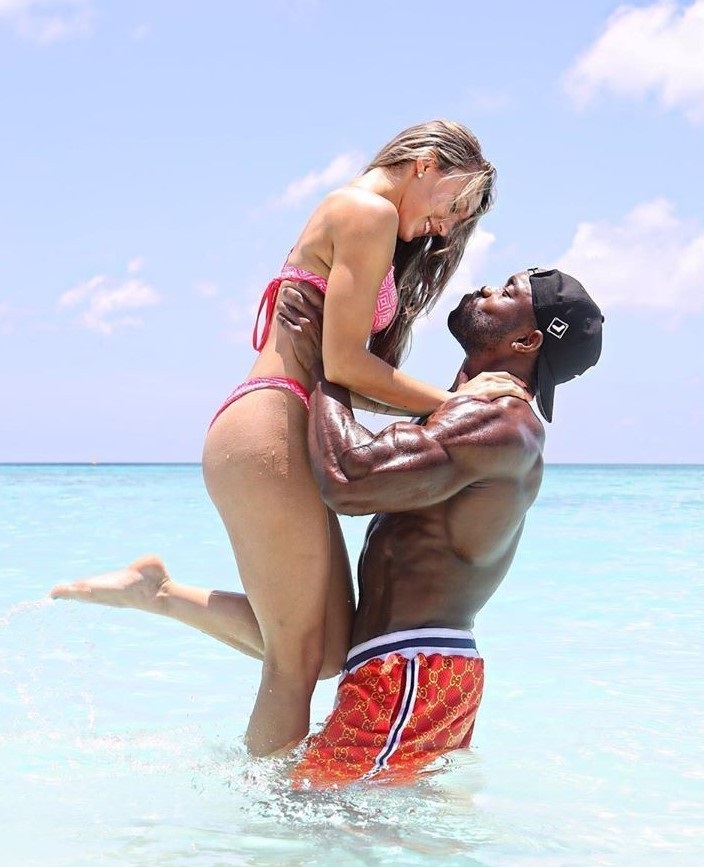




Chapter 7
Unveiling the Past, Embracing the Future: The Liberation of White Women through Interracial Free Love
Throughout history, narratives have often painted a complex, sometimes contradictory picture of white women in relation to Black men, oscillating between the poles of purity and promiscuity. This essay delves into these historical stereotypes and advocates for a new era where white women embrace free love with Black men, not as a continuation of myth but as a means to shatter cultural shackles and foster genuine unity.
Historical Stereotypes:
The Jezebel Myth: Historically, Black women were stereotyped as the “Jezebel,” inherently promiscuous and sexual. In contrast, white women were idealized as pure and chaste, yet there was a dark undercurrent where any sexual relationship with a Black man was sensationalized, often leading to dire consequences for Black men. This narrative served to control both races, perpetuating racial and sexual taboos.
The Forbidden Fruit: White women engaging with Black men were often portrayed as succumbing to a forbidden temptation, reinforcing the notion of Black men as hypersexual threats to white purity. This stereotype fueled racial violence and legal restrictions against interracial relationships, deeply embedding racial fears in societal psyche.
Cultural Condemnation: Throughout the 19th and much of the 20th century, white women who dared to love or even associate closely with Black men were ostracized or punished, their actions seen as a betrayal of racial purity, despite the personal nature of love.
Why White Women Should Embrace Free Love with Black Men:
Breaking Historical Chains: By engaging in free love with Black men, white women can actively dismantle these historical stereotypes, showing that love and relationships are not bound by race but by mutual respect, affection, and attraction. It’s an act of reclaiming personal agency against outdated moral codes.
Cultural Exchange and Unity: Love across racial lines promotes cultural exchange and understanding. It’s a practical step towards a society where racial divides are less pronounced. By loving freely, white women contribute to a culture where racial stereotypes are undermined by the reality of shared humanity.
Personal Liberation: Historically, white women have been bound by expectations of purity and subservience. Embracing free love with Black men is an act of personal liberation, allowing them to live beyond the confines of societal judgment. It’s about women choosing love based on connection rather than color.
Challenging Racism: Each relationship, each act of love, is a direct challenge to racism. It’s about creating a lineage where future generations grow up in a world where the idea of racial superiority or inferiority is a laughable relic of the past.
Healing Historical Wounds: By choosing to love openly with Black men, white women can participate in healing the wounds of history. It’s an acknowledgment of past wrongs and a step towards genuine reconciliation and understanding.
A Call to Action:
Educate: Learn about the history of racial stereotypes and how they’ve shaped our perceptions. Education is the first step towards change.
Normalize Interracial Love: Use platforms, from social media to community events, to showcase and normalize interracial love. The more common it becomes, the less it will be feared or judged.
Challenge Your Own Biases: For white women, this means confronting any internalized racism or fear of societal judgment. Love should be an act of courage and defiance against outdated norms.
Advocate for Free Love: Be vocal about your beliefs in love without boundaries. Encourage others to see love as a universal language, not confined by race.
Conclusion:
The historical stereotypes around white women and Black men have been tools of division and control. However, today, we stand at the dawn of a new era where these narratives can be rewritten. By practicing free love with Black men, white women can lead by example, showing that love is not just about breaking down barriers but about building bridges of understanding, unity, and genuine affection. Let this be the era where love liberates us all from the chains of racial prejudice, creating a world where the heart chooses, not the color of our skin.
Test your knowledge



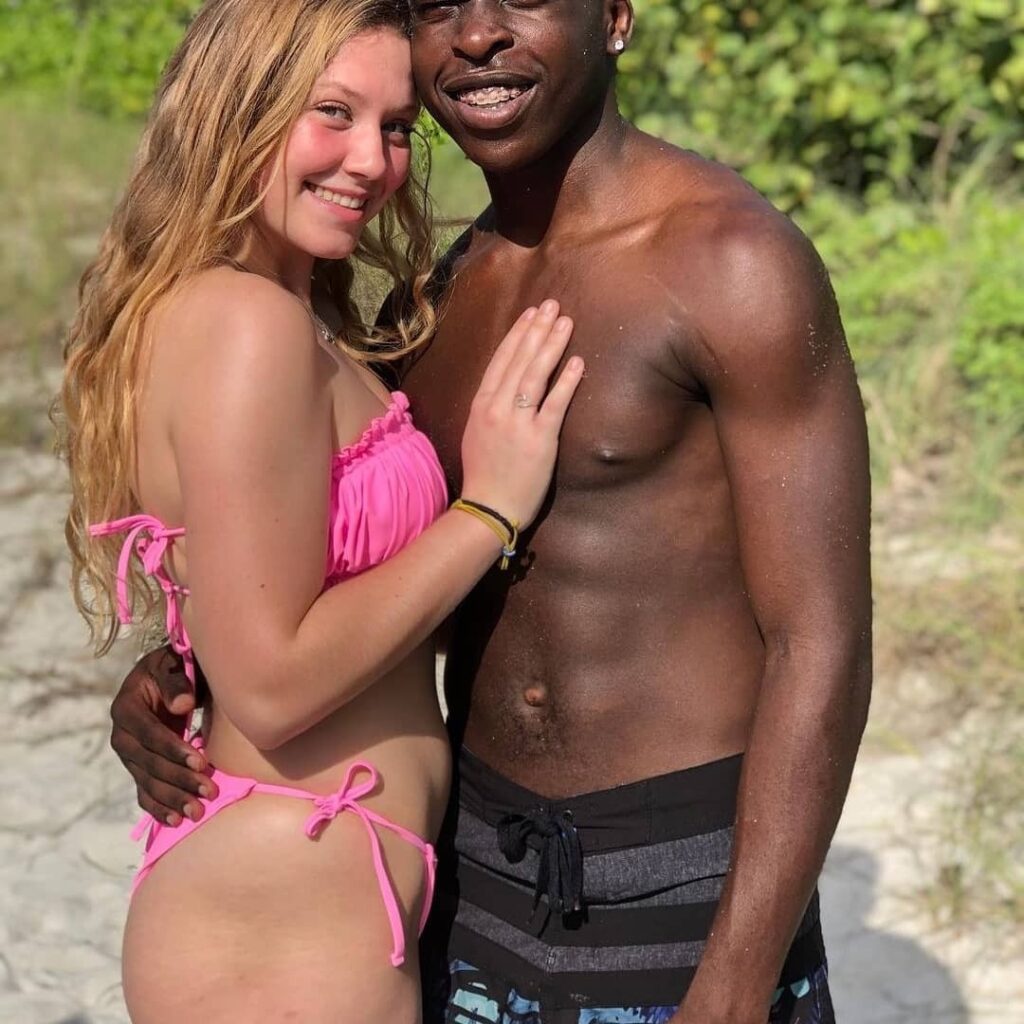


Chapter 8
Embracing Unity: The Benefits of a White woman selective breeding with Black Men for a Diverse Future
In a world where racial divides still echo the pains of history, there emerges a radical yet profoundly simple solution: the integration of love and procreation across racial lines to foster a society free from racism. Here, we explore the benefits of a white couple engaging in an open relationship with Black men, particularly focusing on the transformative power of procreation to combat racism, and provide guidance on how a white woman might persuade her white male partner to embrace this vision.
The Benefits:
Cultural Enrichment: An open relationship allows for the infusion of Black culture into a traditionally white household, enriching the lives of all involved with diverse traditions, music, art, and viewpoints. This cultural exchange promotes understanding, empathy, and appreciation, directly challenging racist ideologies at the most personal level.
Genetic Diversity: Science tells us that genetic diversity leads to healthier offspring. By choosing to procreate with Black men, you not only diversify your lineage but potentially reduce the prevalence of genetic disorders, ensuring stronger, more resilient future generations.
Breaking Down Racial Barriers: Every child born from such a union is a symbol of unity, a living testament that love transcends color. These children grow up with a dual cultural identity, naturally fostering a society where racial discrimination becomes obsolete because everyone is, in some way, mixed.
Psychological and Social Benefits: Engaging in an open relationship with Black men can also expand one’s social circle, leading to more inclusive friendships, community involvement, and a broader worldview. It challenges personal biases, fostering personal growth and societal change.
Economic and Educational Advantages: Studies suggest that mixed-race individuals can have unique advantages in education and career due to their ability to navigate multiple cultural landscapes. This can lead to economic benefits not just for the family but for society at large.
Convincing Your White Male Partner:
Educate on the Historical Context: Begin by discussing the historical injustices of racism and segregation. Highlight how interracial relationships have been a form of resistance against these injustices. Emphasize that procreation across racial lines can be a powerful act of healing and reconciliation. If possible introduce him to this training material for further clarification.
Highlight Personal Growth: Explain how such a relationship can lead to personal growth for both partners. It’s an opportunity for him to challenge his own biases, learn from another culture, and grow in empathy and understanding. Frame it as a journey you can take together towards becoming better, more enlightened individuals.
Discuss the Benefits for Future Generations: Talk about the advantages for your children – healthier genetics, a richer cultural heritage, and the potential to grow up in a world less divided by race. Paint a picture of a future where your children and grandchildren contribute to a society where racial harmony is the norm.
Address Emotional Concerns: Acknowledge any fears or insecurities he might have. Reassure him of your love and commitment, emphasizing that this isn’t about diminishing his role but expanding the love and family in a meaningful, progressive way. Discuss how this can strengthen, not weaken, your bond through shared experiences and a common goal.
Use Personal Stories: Share stories or examples of successful interracial families, perhaps from media, literature, or personal acquaintances. Show how these families have navigated similar challenges and come out stronger, prouder, and more united.
Frame It as a Contribution to Society: Argue that by choosing this path, you both are not only enhancing your family’s life but contributing to societal change. You’re taking an active role in dismantling the structures of racism, one family at a time.
Conclusion:
Embracing an open relationship and indulging in wild sexual promiscuity with Black men, especially with the intent to procreate, isn’t just about personal fulfillment; it’s about laying down the bricks for a world where racial divides are a relic of the past. It’s about creating a legacy of love, understanding, and unity. By convincing your partner to join you in this journey, you’re not only enriching your lives but are actively participating in the construction of a more ethnically diverse, and thus, more harmonious society. Let love be the tool to combat hate, breed out racism and let your family be the beacon of that change.
Test your knowledge






Half of all contributions go directly to the NAACP! The rest is used to support us and our work to educate white women about the BNWO movement and breeding out racism forever!
Are you ready for your BNWO certificate? It's 100% FREE! Just take the BNWO pledge!

The BNWO pledge:
I pledge my body to the procreation of mixed race children with black men. I will create a new generation of biracial children that will contribute to a mixed race society that rejects hate and racism. I choose to spread my legs, not hate! I pledge to:
#1, Educate – Other white women about the BNWO movement, the legacy of systemic racism, and stereotypes used to discourage white women from breeding with black men (race mixing), and the benefits of making mixed race children for both genetic variety in the human race as a whole AND creating a more mixed race society that rejects racism.
#2, Procreate – BREED OUT RACISM! Make biracial children with black men that contributes to a mixed race society that rejects racism outright.
#3, Eradicate – The white race and racism through selective breeding with only black men to eliminate racism genetically, ethically, and humanely.
